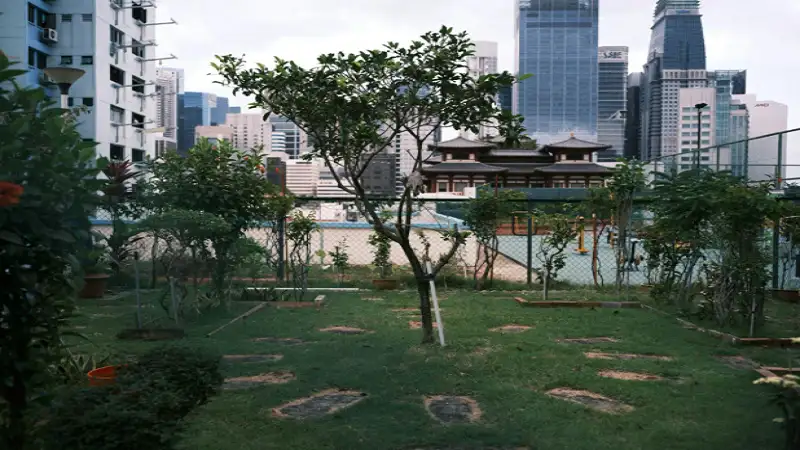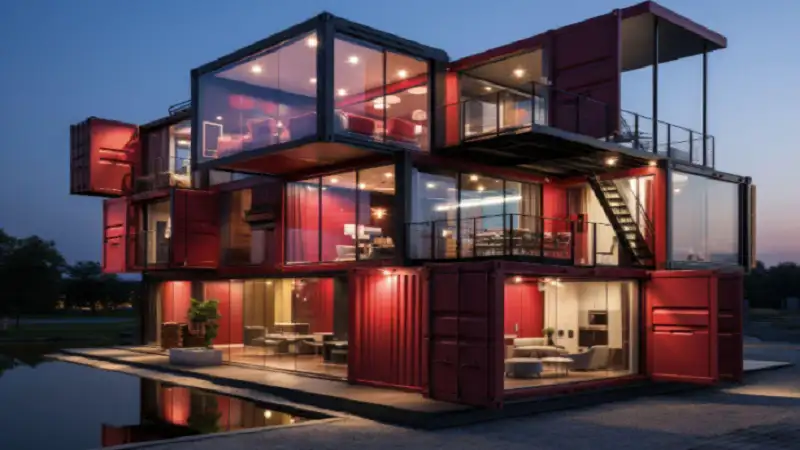Thriving civilizations are those who know the importance of reinvention. All through the ages, mankind has been redefining tools, spaces and systems to new challenges. The modern world is under pressure, and it needs the same spirit: the degradation of the environment, the blistering technological transformation, and the changing social patterns. Thus, innovation has grown from being a creative quest to be a structural need.
The Container as a Symbol of Ushering in the New
The shipping container is an attractive icon of material reinvention in the twenty-first century. The revolution of the steel box revolutionized the logistics and united economies worldwide, as the idea first was conceived in the 1950s to enable world trade to become standardized. Many decades later, when millions of such units wore out their shipping life, they turned to be the raw material of architects, artists and engineers. In a good example, a 40-foot storage container that is used to store goods can be reshaped into a 3D home, office, or a studio. It is repurposable because of its structural integrity, resistant to corrosion, and adaptable. In London, some of the areas like Container City have gone as far as to show how these constructions can transform into viable neighborhoods. The cultural complex Common Ground in South Korea is built using converted containers, and it contains retail shops, cafes, and other event spaces.
The Architectural Paradigm Shift
The concept of container conversions belongs to a greater architectural philosophy, which aims to minimize wastage and increase the lifespan of materials. It is a movement that incorporates design innovation with sustainability. Prefabricated and modular structures based on reclaimed material can reduce the environmental cost of construction with aesthetics and functionalism. Containers, re-use timber, and recycled steel are used by architects to produce cheap and mobile structures. These areas are movable, reusable, and can be extended when it is necessary. Their flexibility coincides with the needs of the urban population in the temporary housing, pop-up structures, and adjustable workplaces. In this case, reinvention will change the lifeless construction into a living process of evolution.
The Second Life of Textiles
The fashion industry depicts re-invention by recovering materials. Textile waste is a major environmental hazard and a brand is becoming more and more obliged to solve this problem by implementing circular design. Large organizations have also launched take-back initiatives in which clothes are picked up, recycled, and put into use as other fabrics. Mixed materials are used through chemical recycling in order to get cotton fibers in start-ups. The example of Patagonia and Stella McCartney is the initiative of Worn Wear and the use of regenerative wool respectively, which should prove that sustainability and innovation can be co-existent. Reinvention, in such circumstances, conserves creativity and reverses the disposable culture.
Reusing Data through Technology
Digital reinvention is active in another, but equally important arena. The information age has been characterized by data. But as opposed to material goods, it can be redefined as many times as possible. Organizations are reconstituting past data, but this time around with the help of artificial intelligence and discovering information that was not accessible before. To be able to get better predictive climate models, meteorological archives are employed, such as. Health institutions use the analysis of legacy records to determine genetic patterns that are related to illness. In this rebirth, information attains new functionality and it changes its stasis to activity.
Learning and Knowledge Reconfiguration
Reinvention is further stretched to the systems that define human thinking. Educational institutions have now started to imagine a way of how knowledge will be delivered, evaluated and utilized. The trend of moving towards hybrid and experiential mode of learning has transformed the traditional classroom. Universities utilize the existing buildings to transform them into joint laboratories. Digital platforms are also able to make lifelong education more accessible, not only geographically and socially. Courses that focus on design thinking, ethical reasoning and technological literacy educate the students to think through complexity. Innovation in the education sector keeps the minds open-minded hence the societies are dynamic towards the demands of the future.
Agriculture Reimagined
The ability to reinvent is also depicted in food systems. The new approach to food production is aquaponics, vertical farming, and controlled-environment agriculture that transforms the process and place of food production. They involve decreasing land use, decreasing the emissions of transportation, and reducing the use of water. In Singapore, Dubai, and Copenhagen, urban agricultural projects are being invested using abandoned shipping containers and warehouses with a hydroponic system. The transformation of industrial areas into high yielding farms illustrates how technology and sustainability go together. Reinvention is the contact between production and preservation.

Reinvention and Artistic Re-use of culture
Transformation has been a creative practice among artistic disciplines since time immemorial. Filmmakers restore historical films using digital tools, sculptors carve something out of industrial wastes, composers reformatting old tapes in a way that echoes past events, and other performers redefine their use of existence from the past. Such aesthetics are a celebration of impermanence and reinterpretation. There is also cultural reinvention of institutions. Old factories are turned into a museum and old movie theaters transformed into community theaters. These metamorphoses testify to the fact that tradition does not need to be preserved as it is, but lives better through rethinking. Cultural continuity comes on the basis of the material past.
Governance By Adaptive Design
Both political and civic institutions are becoming more reliant on reinvention as a method to keep up with the changing societies. Cities test the theory of participatory governance, where they use digital platforms to engage individuals in the decision making process. Modular policies are built in governments and help them to adapt to demographic changes and environmental crises. Adaptive design in government administration makes possible the small-scale experimentation of designs before the national deployment. The model of digital governance developed by Estonia due to the reconstruction following the fall of the Soviet Union shows how the lack of resources can trigger systemic innovation. In this regard, reinvention is transformed into a tool of survival and democratic energy.
The Teamwork of Clever Creativity
The biggest reinvention is carried out in the mind. Limitation is changed into opportunity and scarcity into creativity through resourcefulness. It takes discipline to see what is right in something that seems to be outdated. The societies that develop this spirit will take over the future. Their reconstruction will not be outside in but inside out without thinking. Reinvention is a combination of intelligence and responsibility involving invention and preservation. The art is to see continuity where others are exhausted, and to create progress by intelligent re-use of the already existing. Consumption was the preferred way of the age of plenty. The future will be felicitous to fantasy. Reinvention characterizes that changeover and demonstrates that the future actually is what belonged to the resourceful.
